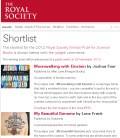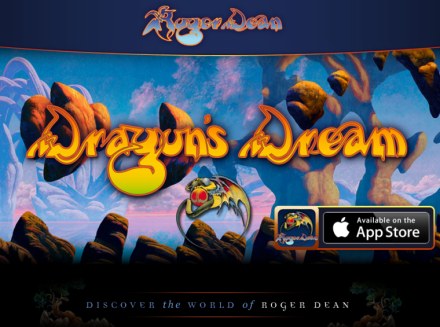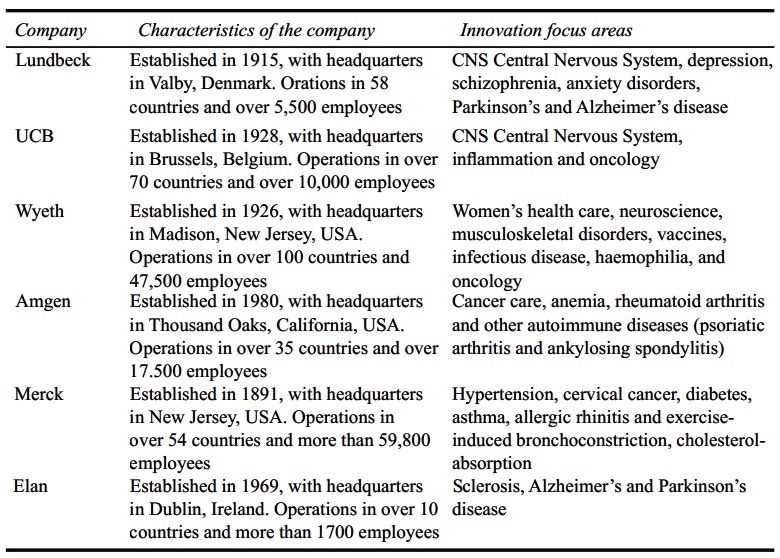I suspect lots of you have already seen this video of a Rubik’s cube, a roll of tape and a shoe on a desk, but if not you will be surprised:
Month: November 2012
The next big thing
There is so much happening in materials: novel composites, nanostructured morphologies, biomimetic materials, biomaterials themselves, materials for solar energy conversion, highly porous materials for energy and gas storage…preparation, modification, characterisation. Seemingly, never a day goes by without at least half a dozen incredible breakthroughs in materials science and technology that are, according to the press releases announcing this or that research paper or conference, going to change our lives forever and hopefully for the better.
Blog – Of small steps and giant leaps – David Bradley – Materials Today.
Stimulating gravity simulation
Faraday could play with magnets and currents to figure stuff out, but without a desktop model of reality, nobody could ‘play’ with gravity to see what happens. This virtual gravitational model apparently adds precision lacking in earlier simulations. The simulation is a quick run-through of what’s available on GravitySim.net courtesy of system creator Alexander Mayer.
According to Mayer: On the left you have the orbiting ‘spacecraft,’ which is the inertial frame of the orange ball at the centroid. In this frame the orange ball experiences *zero* net force so it never moves. An internal view of this ‘spacecraft’ is on the right. Eight other balls (test masses) are each spaced 6 metres apart (Test_Mass_Separation slider control) in the grid. The orange ball has mass (~12.5 metric tons per Orange_Ball_Mass slider control), but all the other balls have negligible mass (1 gram); consequently, they only interact gravitationally with the orange ball and the Earth.
A lot of people would expect all the balls to stay put, because in their mind this is an “inertial reference frame.” However, in reality no such thing exists. There are gravitational tidal forces at work. You see the result, calculated to extreme precision. This is precisely what would happen empirically, if you could set up the identical modeled experiment in reality.
A version of the video with commentary and more detailed annotations will be available on Mayer’s site soon.
Science book prize shortlist
 The shortlist for the 2012 Royal Society Winton Prize for Science Books is out. The winning book will be announced at a public event on 26 November 2012.
The shortlist for the 2012 Royal Society Winton Prize for Science Books is out. The winning book will be announced at a public event on 26 November 2012.
The judging panel comprises: Jocelyn Bell Burnell, Visiting Professor at the Department of Astrophysics, University of Oxford, Jasper Fforde, Author of Thursday Next novels and The Last Dragonslayer series, Tania Hershman, Author of short story collections, writer-in-residence at the University of Bristol and founder and editor of The Short Review, Kim Shillinglaw, BBC Commissioning Editor for Science and Natural History, Samuel Turvey, Royal Society University Research Fellow, Institute of Zoology.
My book? No, not this year, published after the qualifying deadline. Next year? Maybe…
Moonwalking with Einstein by Joshua Foer
Published by Allen Lane (Penguin Books)
An exploration of human memory
My Beautiful Genome by Lone Frank
Published by Oneworld
A personal perspective on human genetics
The Information by James Gleick
Published by Fourth Estate
The story of information and how it is used, transmitted and stored
The Hidden Reality by Brian Greene
Published by Allen Lane (Penguin Books)
An examination of parallel universes and the laws of the cosmos
The Better Angels of Our Nature by Steven Pinker
Published by Allen Lane (Penguin Books)
An assessment of the decline of violence in history and its causes
The Viral Storm by Nathan Wolfe
Published by Allen Lane (Penguin Books)
An exploration of the world of the virus
Getting Viagra up in 20 seconds
Pierre Morieux, a postdoc in medicinal chemistry in France sent me a Youtube clip he made. In it he uses some neat tricks, keyboard shortcuts, hotkeys and the like to construct a molecule of Viagra in ChemDraw in less than 20 seconds. He reckons it could save anyone who has to draw chemical structures and reaction schemes many hours if they learn from his tutorial. At first, it looks like he’s cheating somehow, he draws it so quickly. But, he isn’t he’s just set up his installation of the almost ubiquitous software to make drawing organic compounds a whole lot easier than using mouse clicks on the toolbar.
So, here it is a how-to draw Viagra and almost any other small molecular structure in ChemDraw very quickly.
Girl with dog poop, a study
This picture of a girl in a woolly hat with autumn leaves on her eyes lying on a woodland floor has been doing the rounds on Facebook etc. Not because it’s cute or funny but because if you look closely you can see a dog turd right next to her head, at 1 o’clock in the photo.

Here are a few good reasons why dog owners should always scoop the poop to bag and bin it: Heartworm, whipworm, hookworm, roundworm, tapeworm, parvovirus, coronavirus, giardiasis, salmonellosis, cryptosporidiosis, campylobacteriosis.
Dermatophagoides pteronyssinus, house dust mite
 I do like a word game or puzzle. Biking Becky was just wondering on twitter what is the etymology of the scientific binomial for the house dust mite, Dermatophagoides pteronyssinus.
I do like a word game or puzzle. Biking Becky was just wondering on twitter what is the etymology of the scientific binomial for the house dust mite, Dermatophagoides pteronyssinus.
My first guess is dermato = skin and phagoides means eating, so skin-eating. The ptero part of the name threw Becky because she was thinking it somehow might allude to pterodactyl, but that name simply means winged-fingers, the ptero being wing or feathered. So, the first half of the name alludes to the featheriness of the house dust mite (it certainly doesn’t have wings). That leaves the “nyssinus” bit. The “n” is presumably a linking letter between prefix and suffix so what does yssinus mean, or is the “nys” a connector and that we’re looking at “sinus”, which could allude a hollow body, sinusoidal shape somehow…
Anyone know the etymology of Dermatophagoides pteronyssinus for sure?
LazyTruth autodeletes Deceived Wisdom
This could be the end of deceived wisdom, at least for GMail and Chrome users. The LazyTruth extension from MIT scientists scans your inbox and “fact checks” messages against the online repositories of urban legends, political myths and security threats alerting you if the contents are BS.
The extension could make mythbusters redundant, save you having to watch QI and make buying my book something you would do purely for the entertainment…
StreetView for Topographic Oceans
Prog rock fans the world over will be familiar with the artwork of Roger Dean, he designed weird hippy furniture in the 1960s, I believe, but then went on to do some of the most famous album covers of the era for Yes and others. Anyway, I’m supposed to be interviewing him soon about his iPad app Dragon’s Dream. You can think of it as like Google StreetView for topographic oceans and other Deanscapes…with a flying dragon that keeps bumping into floating rocks and trees (unless you’re a gamer and can make it stop and so earns points).

Skunk pharma
 A case study of six leading pharmaceutical companies – Amgen, Elan, Lundbeck, Merck, UCB and Wyeth – by Annabeth Aagaard of the University of Southern Denmark points to how the industry might adapt to ongoing pressures from rising R&D costs, depreciating patent value and public authority desire to cut healthcare costs.
A case study of six leading pharmaceutical companies – Amgen, Elan, Lundbeck, Merck, UCB and Wyeth – by Annabeth Aagaard of the University of Southern Denmark points to how the industry might adapt to ongoing pressures from rising R&D costs, depreciating patent value and public authority desire to cut healthcare costs.
“These challenges have increased the focus on shortening development times and the efficiency of Front-End of Innovation (FEI),” explains Aagaard. Writing in the journal IJTPM, she explores how idea management may be applied as a tool to promote pharmaceutical FEI her findings have implications not only for the companies themselves but for policy-makers and how FEI might best be supported and so allow companies to develop strong drug candidates and bring them to market quickly.
Aagaard found that the six companies employ very similar approaches to idea management in FEI, which might suggest that innovation would be stifled and the competitive edge lost. She explains that her contacts at the companies studied pointed out that the similarities in approach are inevitable: “We pretty much all use the same discovery process model, as we have to answer to the same regulations (i.e., FDA) and live up to the same requirements,” one company said. Another stated: “You have to remember, that we (i.e., the pharmaceutical scientists) all go to the same conferences, are more or less educated in the same places and are moving to and between the same companies, so we share a number of similarities and probably think very much alike when it comes to innovation and how to develop a new drug.”

Apparently, skunk work – rule-breaking work by a splinter group within the company – is perhaps the way companies might break the mould in their pharma discovery and development efforts. However, the current regulatory system still leads to low-risk, low-cost approaches to R&D and “me-too” products. Aagaard points out that skunks aside, it might be that a radical shake-up of patent law would be the way forward to new innovation in an industry stifled by expiring patents and desiccating pipelines.
![]() Aagaard A. (2012). Idea management in support of pharmaceutical front end of innovation, International Journal of Technology, Policy and Management, 12 (4) 373. DOI: 10.1504/IJTPM.2012.050138
Aagaard A. (2012). Idea management in support of pharmaceutical front end of innovation, International Journal of Technology, Policy and Management, 12 (4) 373. DOI: 10.1504/IJTPM.2012.050138